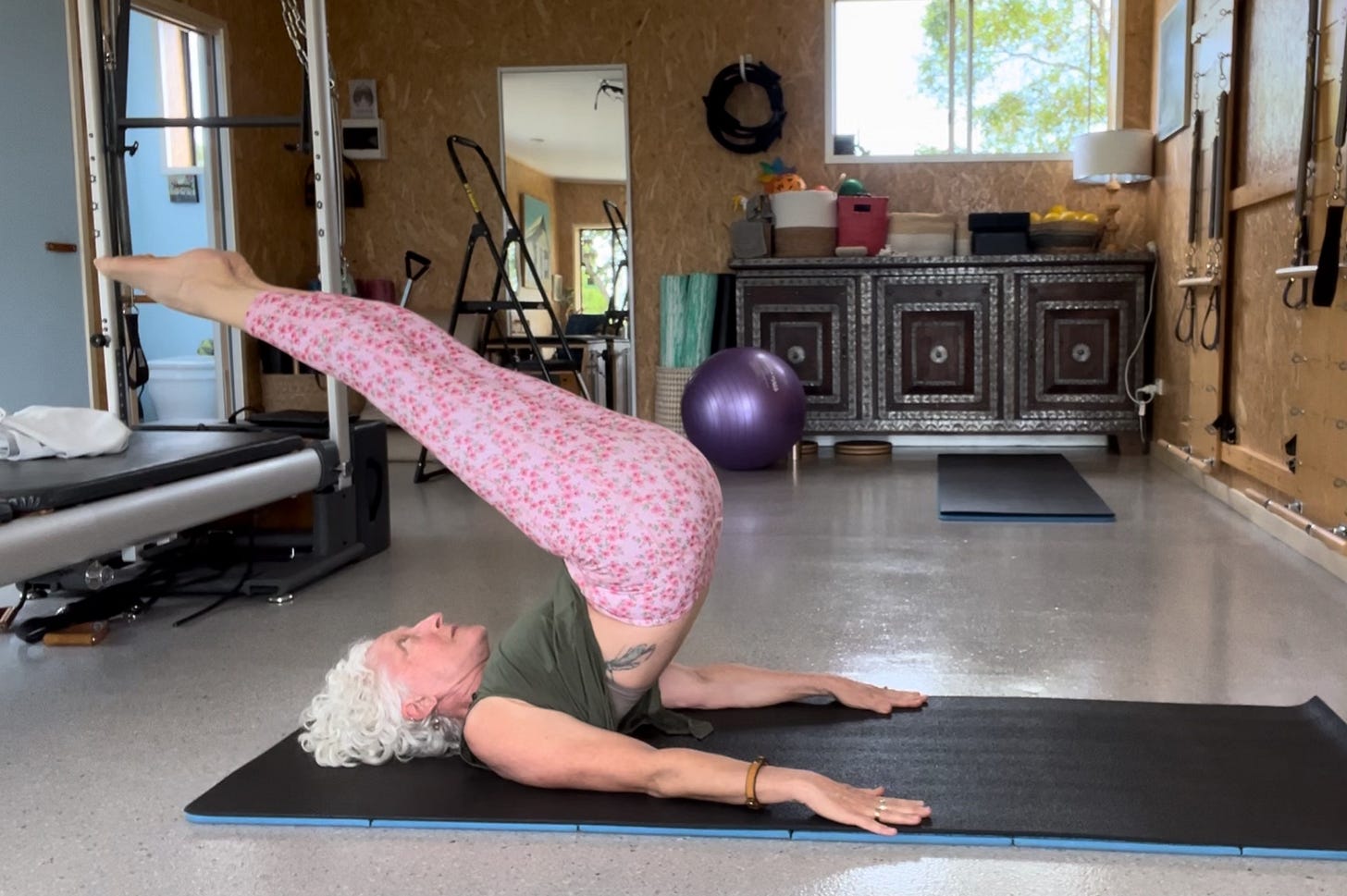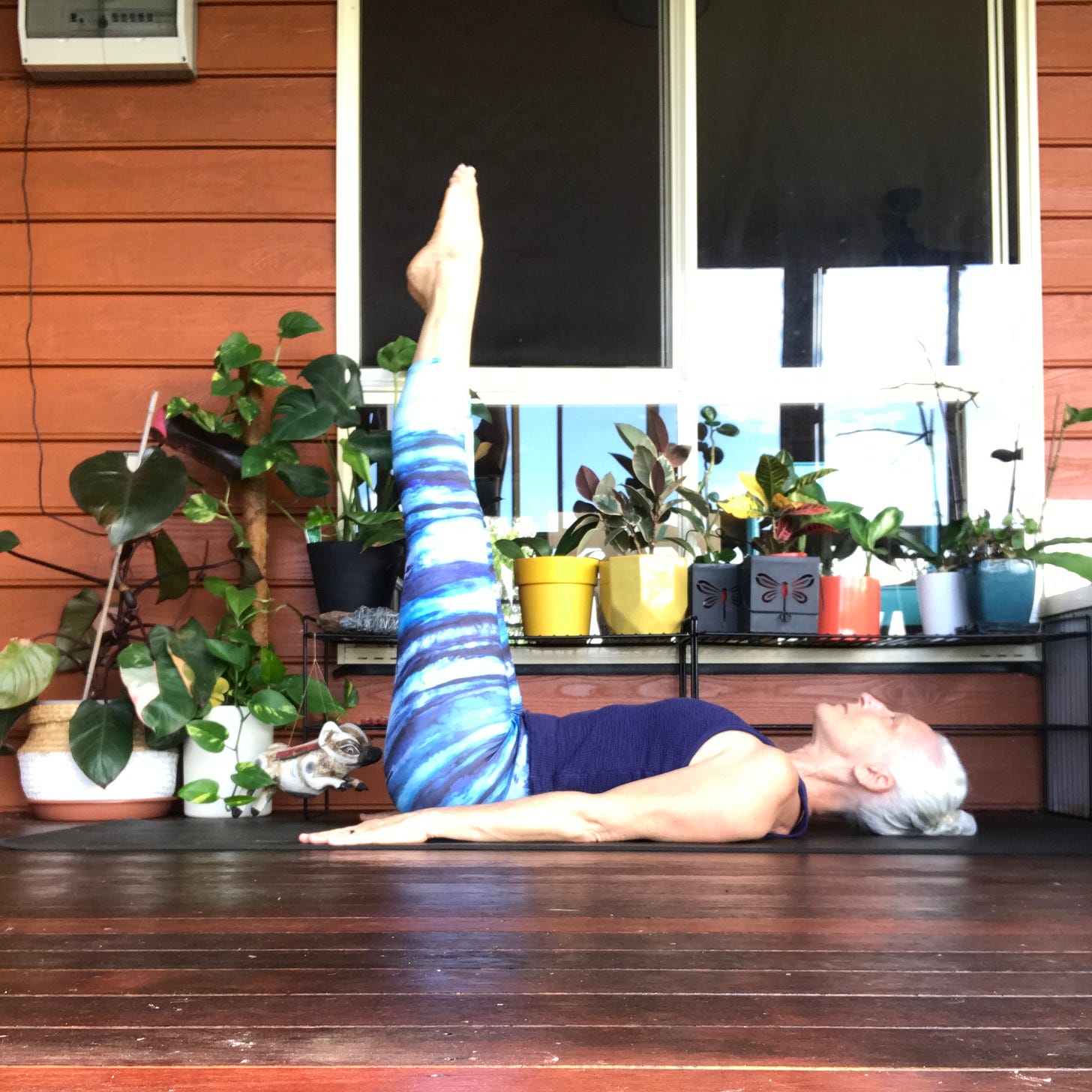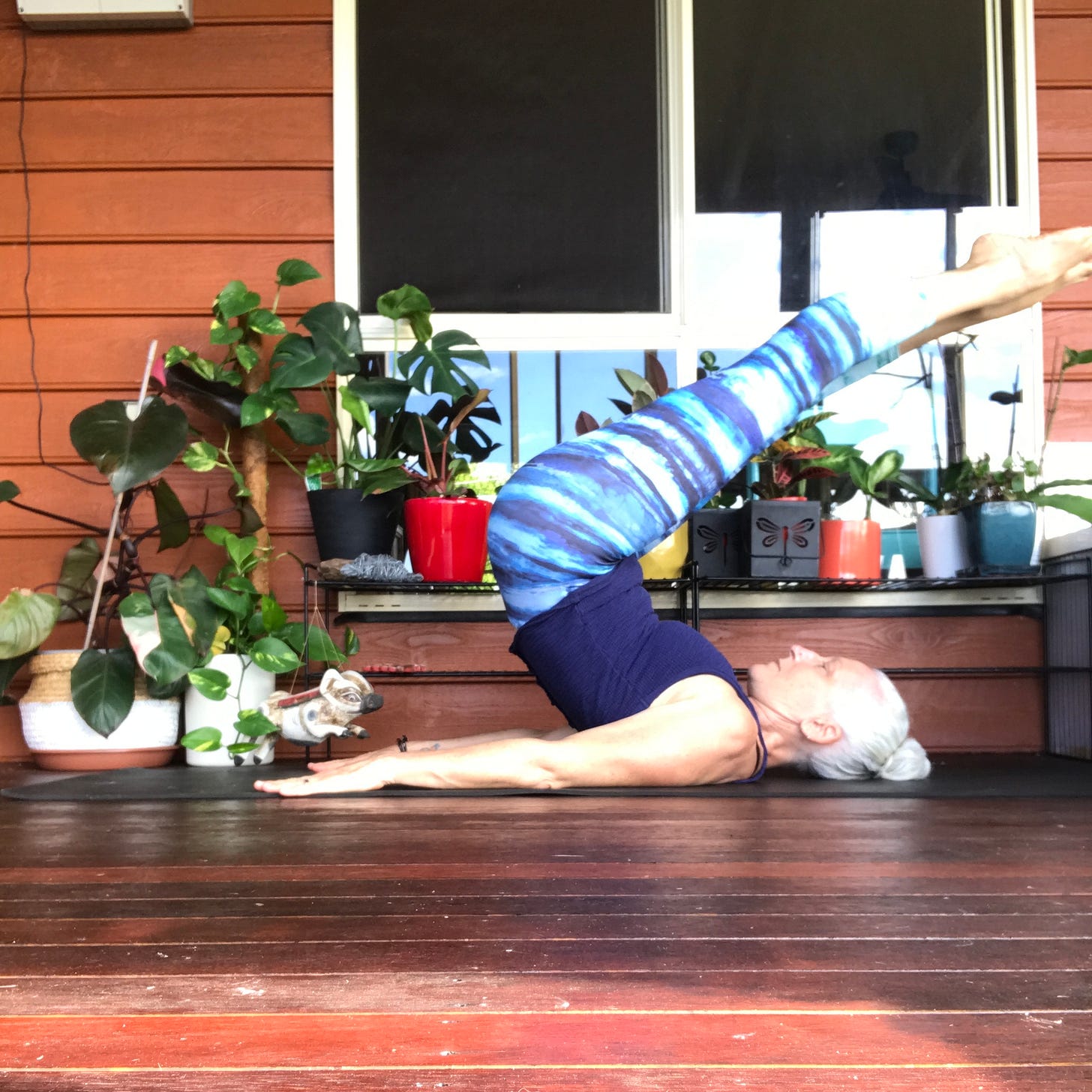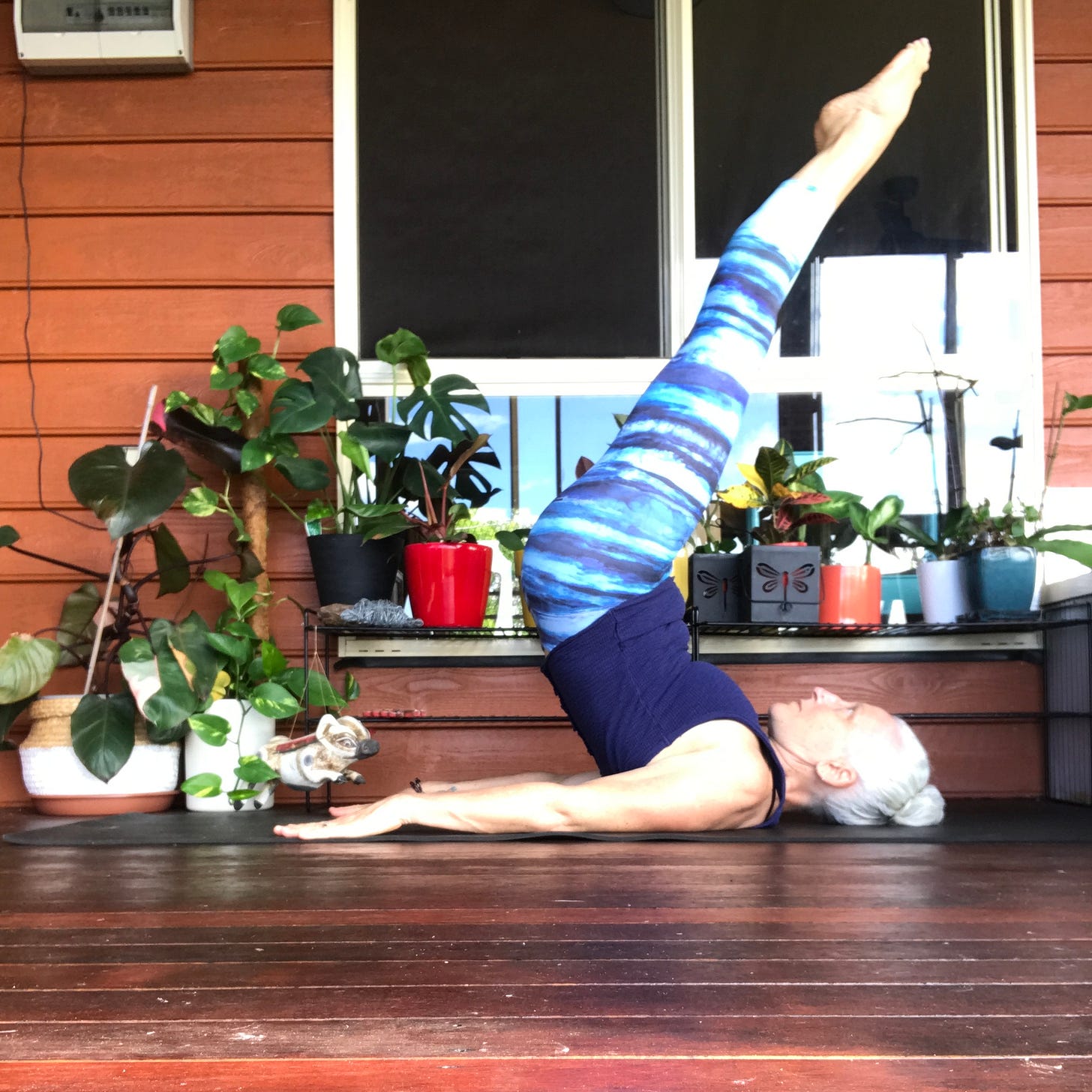Pilates Exercise Dive: Jackknife
Bring your Blade-Like Focus for the Sharp Moves Ahead
Discover the Pilates Jackknife
Are you familiar with the Pilates Jackknife? I get the sense that many Pilates practitioners are not (and I don’t teach it as much as I should). Jackknife is a classic mat exercise that brings strength, control, and balance into one powerful movement. You might say it’s gnarly - I know I do.
for the video tutorial scroll all the way to the bottom of the post
I think I assumed that Jackknife was named after the knife, but then I remembered that Swan is named not after a bird but after a dive. Could it be the same for Jackknife? Joseph Pilates was an athlete after all. Well the dive was probably named for the knife so I guess it really doesn’t matter - I can see the shape of both inside the exercise…
Now that we’ve discussed that earth shattering news let’s break down Jackknife. What is it? How to perform it (to the best of your ability), and Why it’s a fantastic (though challenging) addition to your Pilates practice.
*Please be aware that the Jackknife is not for everyone - be careful if you have any neck or shoulder issues. Pilates can be useful for everybody but not every exercise is suited to Every Body*
WHAT is the Pilates Jackknife?
Jackknife is, in my opinion, an intermediated/advanced to advanced exercise. It shows up about two thirds of the way through Joseph Pilates’ original 34 mat exercise sequence. It’s #20 in his flow.
You can think of it as a supercharged version of the Roll Over (#3), but this time, you’re taking the weight of your legs, hips, and torso up off the mat into a high shoulder stand. It's one of those exercises where you realize that Pilates is not only about mastering control and balance, but also about defying gravity - literally.
In Jackknife while lying on your back you lift your legs to 90 degrees, then you roll your hips and torso off the ground with the legs reaching past your head. You’re eventually aiming to reach your toes straight toward the ceiling in a high shoulder stand. All you have to do then is smoothly reverse that to lie back down.
Sounds simple, right? Well… remember I always say, simple does not equal easy. Jackknife’s a lot tougher than it looks because you have to find stability with only your arms, upper back, and head in contact with the mat. Then you have to fight gravity because your legs, hips, and torso do not want to stay up in the air!
Here’s the photo from Mr. Pilates’ book, Return To Life:
Please note that there is a printing error in my book! Photos #2 & #3 are identical. Photo #2 should be him lying down with only his legs reaching up to the ceiling.
HOW to Do the Pilates Jackknife
Let’s break down the Jackknife step by step. It’s one of those exercises where every inch of movement counts, so precision and focus are key:
Start by lying flat on your back, legs extended, and arms reaching down by your sides.
Engage your core to lift your legs straight up to 90°.
From here, without changing the angle of your hips, lift your pelvis and lower ribs off the mat, moving into a high shoulder stand. It’s a challenge to keep that angle at 90 and can be hard to visualise from your back.
Once you’re up there, extend your legs further, reaching your toes toward the ceiling and using that reach to also lift your hips a little. This is where the name Jackknife makes sense - it’s like opening a blade.
Ideally at the top of the movement, your body should be in a straight line from your shoulders to your toes. (Mr. Pilates does this very well!)
Now for the tricky part - slowly roll your spine back down onto the mat, trying to keep your legs from collapsing towards you. Think of that 90° angle. Gravity will want to take over, but your job is to resist, resist, resist! Remember JP called his work Contrology and here that name is apt.
Once your spine is fully on the mat, lower your legs away from you as close to the starting position as possible while keeping good form.
And repeat. 4-7 times.
Tips
Don’t be afraid to use your arms. Seriously, my triceps are usually cramping by the time I’m finished.
And again, don’t be afraid to use your arms. Your neck will thank you because it’s going to feel pressure, more so the higher you lift your body.
Don’t forget about your breath. Jackknife is def an exercise where it’s easy to hold it. All this does is lock up your body and make it harder to negotiate the sequential movement.
Modify as you need: soften the knees, only open your “knife” a little bit (watch the video for a couple more tips)
You must use your whole body, yes, your core is in control but you have to connect your arms and legs into it. We’ve already talked about the arms, now use your quads to connect into your hips! Point your feet, it’ll help.
Tempo is key and you can play with it. Experiment: Too slow? It’ll feel like you’re lifting an anvil! Too fast and you’ll not only miss the details, but without enough control gravity will accelerate that anvil right back to earth.
WHY is the Jackknife Important?
So, why put yourself through the pain challenge of Jackknife?
Well, it’s one of those exercises that checks all the Pilates Principles: Control, Centring, Flow, Breath, Precision, and Concentration, as well as some other boxes like balance and strength.
Here’s why Jackknife is worth adding to your workout:
Core Strength: This move is a full-on core challenge. Remember your core is not just your abdominals, Yes, you’re using them but also your back, inner thighs, and glutes lift and lower your torso while controlling the weight of your legs.
Balance and Stability: Only a small portion of your body touches the mat in this exercise - your arms, your upper back a bit of your shoulders, and your head. That means the rest of your body has to balance in the air, which engages all your stabilizing muscles.
Spinal Control: Jackknife is all about spinal articulation. Rolling down slowly without collapsing teaches you how to control your spine’s movement - this skill shows up all over the Pilates repertoire, think Roll Up, Shoulder Bridge, and Spine Stretch.
Prepares You for More Advanced Exercises: Jackknife teaches you strength and control andis a gateway to even more challenging exercises - Control Balance comes to mind.
Breathing: It’s easy to hold your breath here (we’ve all done it), but proper breathing helps keep the movement smooth. Holding your breath actually makes the exercise harder because it will reduce your ability to articulate through your spine. It can be a two breath exercise (one on the way up and one on the way down. Or a one breath exercise - inhale up and exhale down.
Symmetry: Jackknife challenges your body's symmetry - rolling up and down evenly can highlight if one side of your body is stronger than the other, so it’s great for uniform development.
Final Thoughts
The Pilates Jackknife is a tough but rewarding exercise. It’s not something you’ll master on your first try, and that’s okay. Start with a smaller version - maybe just lifting your hips a little off the ground - and work your way up to the full shoulder stand.
Remember, Pilates is all about progression. The exercises build on each other with the skills and larger concepts circling back around again, Jackknife is a perfect example of this. Exercises like Roll Over, Corkscrew, and Double Leg Lower Lift all help prepare you for this moment. And as your Jackknife gets better so will the “easier” exercises and you’ll have more tools to take on even bigger challenges.
So next time you’re on your mat, give it a shot. Whether you go for the full version or a modification, Jackknife is bound to strengthen not just your body but your Pilates practice as a whole. Open yourself up to the possibilities!
Don't forget to check out the video demonstration below Joe’s quote to see Jackknife in action!
Thanks for reading.
xBec
The information contained above is provided for information purposes only. The contents of this blog are not intended to amount to advice and Rebecca Forde disclaims all liability and responsibility arising from any reliance placed on any of the contents of this post








